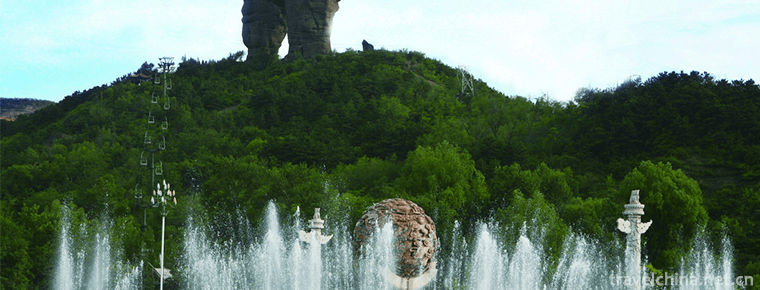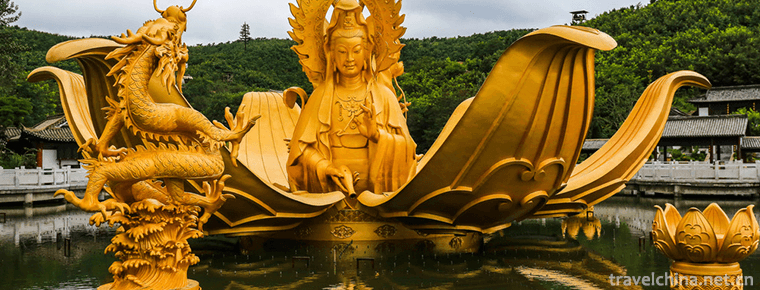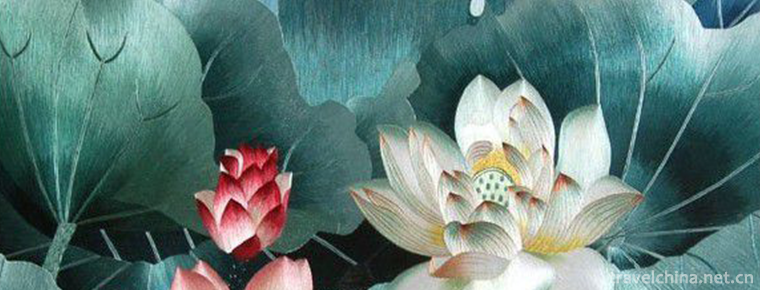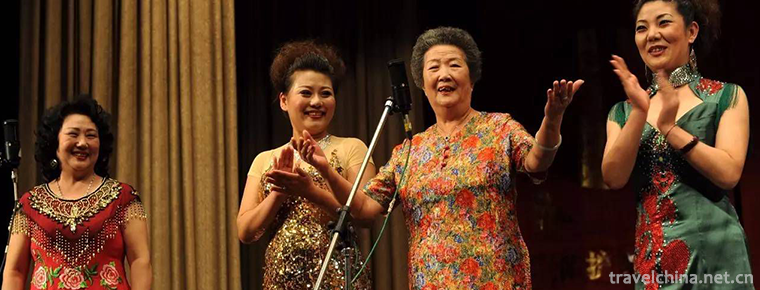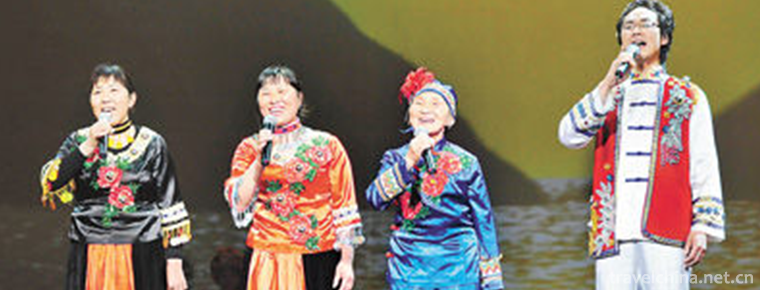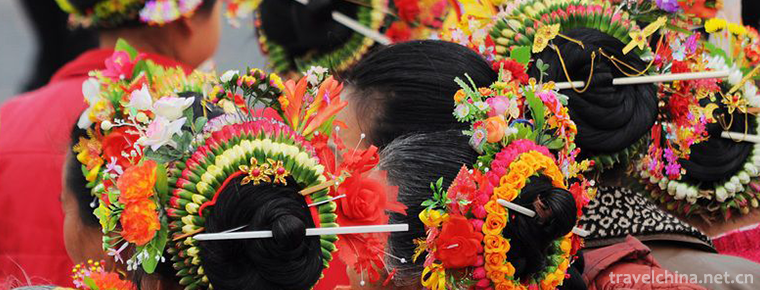Pudong Storytelling
Pudong Storytelling
Pudong storytelling, also known as cymbal books, Shanghai books, peasant books and so on. Pudong pays equal attention to both storytelling and singing, pays attention to plot, and has a fast rhythm. The most representative traditional songs are Shigong Case and Baogong, etc.
Pudong storytelling originated in Pudong, Shanghai, and spread all over the suburbs of Shanghai and Pinghu City, Zhejiang Province. On June 14, 2008, the "Pudong Talk" declared by Shanghai Pudong New Area was approved by the State Council to be included in the second batch of national intangible cultural heritage catalogue, project number V-59.
Historical evolution
Pudong storytelling is a cymbal book, which is divided into "small book" and "big book". Pudong storytelling, which also talks, sings and beats with cymbals, is generally called "small book"; Pudong storytelling, which only talks and does not sing, is called "big book", also known as Shanghai book and Shanghai commentary.
Pudong storytelling originated from the propaganda of Buddhist doctrine of cause and effect. Living in Pudong, the singing instructor knocked cymbals and used Pudong language, voice, intonation, self-attack, self-talk and self-singing. The content of Pudong storytelling was Buddhist law and scripture. Its melody not only gathered Pudong's folk songs, field songs, salt songs, fishing songs, but also integrated the lotus originated from Buddhist music. As a result, Pudong storytelling was initially called "Saying Cause and Effect" or "Cause and Effect Book". Up to now, Chongming and Pudong storytelling spreading to Pinghu, Jiaxing and other places in Zhejiang are still called "Cause and Effect Book".
At the beginning of the 20th century, Picture Daily in Guangxu Period once contained "Saying Cause and Effect Painting" and inscribed the oil poem "Knocking on Cymbals to Say Cause and Effect, Oral singing will also do gestures, many people listen to and laugh fans, just to speak the local dialect clearly". It can be seen that Pudong storytelling has attracted a lot of audiences at the beginning, its performance environment is not in the teahouse, but in the streets and alleys; in the thirty-second year of Qing Guangxu (1906), the stone-printed version of "Shanghai and Jiang Commercial Market Ci" written by Yian's master recorded: "Tea Lai every storyteller, mirage of the sea market, a chat with each other, eavesdropping to listen. It proves that the environment of "storytelling" had entered the small teahouse at that time; the props of "one fan, one ou" show that the props of Pudong storytelling have been added; the words "idle and eager to listen" tell the audience a lot. According to Chuansha Records in 1936, there was a Pudong Storytelling Bookstore in Gaoqiao Town during the reign of Qianlong in the Qing Dynasty; Sanzao Town Records in Pudong recorded that in the late Qing Dynasty and early Republic of China, "some spacious tea gardens in Sanzao Town invited those who sing cymbals to open up a new bookstore for tea-fetching guests"; Zhou Pu Town Records said, "This kind of rap and singing was particularly prevalent." Before the War of Resistance Against Japan, there were similar records of Pudong stories in Kangqiao Town Chronicle, Pengzhen Town Chronicle, Tanzhi Town Chronicle and Sandun Town Chronicle.
From the pedigree of the old artists'memory, Pudong storytelling began in the five to sixteen years of Qingdaoguang (1825-1836), and its founder was Gu Xiuchun.
In 1932, there were two Shanghai Book Clubs in Pudong. One is called "Datuan Kaizhi Society". It is located in Datuan Town, Nanhui County; one is called "Shanghai Yongyu Society", which is located in Yangjing Shunfeng Tea Garden, Chuansha County. At that time, Pudong storytellers occupied most of the tea garden bookstores in Pudong, and performed in the old city chamber of Puxi from time to time. After the outbreak of the War of Resistance Against Japan, both organizations were disbanded because of the war.
After the founding of New China, Shanghai Shanghai Shanghai Books Improvement Association was established; Shanghai Pudong Books Performing Team was established in 1958 when Pudong County was established; when Pudong County was abolished in 1961, it was renamed Shanghai Pujiang Shanghai Books Team when it was transferred to the southern urban area; in 1978, Shi Chun was appointed to rebuild Pudong Storytelling Organization, and in May 1979. Shanghai Chunjiang Shanghai Bookstore was established, and in 1987 all the Shanghai Chunjiang Shanghai Bookstore were transferred to business. Since then, the professional performance group of Pudong storytelling has ceased to exist.
Artistic characteristics
Singing Form
Pudong storytelling is performed in Pudong dialect, accompanied by cymbals, with waking wood, folding fans and handkerchiefs as auxiliary props. The traditional form of performance is usually singing by sitting alone. The performers wear long clothes. The performers begin to sing four poems or lyrics with bamboo chopsticks on cymbals. Then they sing the first part of the performance, and then they say the original part. At the beginning of the performance, they also sing a paragraph. The main part of the performance is talking, sometimes interluded. After liberation, after reform, string accompaniment was added, and the forms of group singing and performance singing appeared.
Performing Characteristics
Pudong raps cymbals when talking and singing to make the atmosphere more beautiful. The seriousness of cymbals changes with the development of the plot and the change of the characters'feelings. The language is popular and vivid and full of life.
Tune Aria
The tunes of Pudong storytelling are simple and lively, including "long tune", "slow tune", "urgent tune" and "crying tune". Song tunes are divided into two categories: Xixiang tune and Dongxiang tune. Songjiang is dominated by Xixiang tune, while Chuansha and Nanhui are dominated by Dongxiang tune. Pudong's storytelling and singing lay equal stress on both plot and rhythm. It used to be mainly singing, but now speaking is more important than singing. Lyrics are generally based on seven-character sentences.
Epidemic areas
Pudong storytelling is popular in Songjiang, Chuansha, Nanhui, Fengxian, Chongming and Pinghu County, Zhejiang Province.
Inheritance and Protection
Current situation of circulation
Professional actors of Pudong storytelling are rare. This folk opera art is declining gradually. It is urgent to strengthen the protection and inheritance.
protective measures
Beicai Town in Pudong District is gradually establishing a relatively complete protection system for intangible cultural heritage of Pudong storytelling, so that precious and endangered Pudong storytelling can be inherited and protected.
In August 2007, the Pudong Storytelling Exhibition Hall was set up. The exhibition hall focuses on the historical and cultural accumulation of the past and present storytelling in Pudong, demonstrates the intellectual legacy of the hard work of folk artists for hundreds of years, and tries its best to enrich the collection of the exhibition hall. The curator of the exhibition has been opening to the public for many years, explaining to visitors, publicizing the unique culture of Pudong storytelling, so that visitors can further understand the long history of Pudong folk opera and expand its social influence.
In early October 2008, Pudong Storytelling Inheritance Base of Beicai Town Central Primary School was officially set up. Thirty-five excellent students were selected to participate in the training, and professional teachers were assigned to teach. After a period of training, the primary school performance team could cooperate with the community and schools to perform during the festival, so that Pudong storytelling could be followed by others. Accumulating more than two years of practical experience, Beicai Middle School affiliated to Shanghai Maritime University, Pudong Storytelling Heritage Base, was awarded the license in April 2011, which made the training develop to a high level.
At the Pudong Storytelling Expert Forum held in December 2008, Mr. Wu Wenke, Director of Quyi Research Institute of China Academy of Arts, said that "at the national level, we should break down regional barriers, carry out census and excavate the cultural resources of old artists in Shanghai, expand social influence and effectively protect Pudong storytelling by organizing Invitational competitions of folk arts. The speech of "realizing the sustained and healthy development of intangible cultural heritage" played a leading and promoting role in "inheriting, protecting and developing" Pudong storytelling in Beicai Town.
In 2009 and 2013, Bei Cai Town held the Invitational Competition for Quyi in Yangtze River Delta Region of "Cai Cup in Pudong Northeast" of Shanghai International Art Festival in order to strengthen regional cultural exchanges, inherit excellent national culture and build Bei Cai cultural brand. From Shanghai, Jiangsu, Zhejiang and other places, Pingtan, Monologue Opera, Shaoxing Lianhualuo, Huzhou Santiao, Pudong storytelling, Gong and drum books, Wenzhou drum lyrics, singing Spring Niu, etc. have appeared on the stage, leading stories, Pudong Storytelling "Marriage Girl Song", "Pudong Marriage" and "Segmental Contracting" selected by Beichuan Wenguang Service Center, etc. are well received.
representative figure
Shi Yaoliang, born in 1926, is from Xiumingqiao, Quantang Township, Pinghu County, Zhejiang Province. Shi Yaoliang once worked as an apprentice in a silk shop, and later learned to sing cymbals in Shen Along, a folk artist. Mr. Shen Along's witty language and many stories about "flower arrangement" have exerted a great influence on Shi Yaoliang's later rap style and personality. Later, Shi Yaoliang left Pinghu and came to Shanghai Jinshan Wei Jinsi Nianqiao Teahouse to rap "Seven Chivalrous and Five Righteousness" and was invited to perform in Songjiang's bookstore. After liberation, he was elected chairman of Songjiang Branch of Shanghai Shanghai Shanghai Books Improvement Association by storytellers. Since 1963, he has served as Vice-Chairman of Shanghai Quyi Artists Association. He traveled to Beijing three times in 1958, 1960 and 1963, participated in the National Cultural Congress twice, and participated in the National Quyi Performance once. He was criticized during the Cultural Revolution and died of illness on July 14, 1982.
Zhang Guiting was born in Kangqiao Town, Nanhui in 1922. He came from a family of Taibaoshu and Pudong storytellers.
In 1936, 14-year-old Zhang Guiting learned to sing Taibao and Pudong storytelling with his father and ran around the dock. He is accustomed to interlacing Buddhism, gimmicking and selling books to attract audiences. The teahouses he visits are often full. Zhang Guiting devoted all his life to Xiao Bayi, in which some of the main characters are in the contradiction of loyalty and treason, good and evil, beauty and ugliness, right and wrong. Among these characters, he poured into his strong love and hatred from his childhood experience of running through rivers and lakes and rough life. After Bei Cai Town Wen Guang Service Center became Pudong Storytelling Base, in order to collect image data of Pudong storytelling, Zhang Guiting's "Xiao Bayi" was recorded for 23 hours.
Lu Wenxian was born in Xinchang Township of Nanhui in 1931. At the age of 8, Lu Wenxian dropped out of school and went to the dock with his father, Lu Guanfu, to read books for his younger brother. When he was 9 years old, he won a lot of praise for his father's coming on stage to sing "Famous Flowers in December". In 1961, according to the literary and artistic policy at that time, Lu Wenxian was delegated to his hometown to work, and he never sang Pudong storytelling again.
Shi Chunyian, born in 1936, was born in Chuansha County, Shanghai. Ji Fengshan was once a teacher. Ji Fengshan is an independent family in Pudong's storytelling art, and has a good reputation. Shi Chunnian kept innovating in his storytelling. Apart from the fact that martial arts were almost chaotic, he was also good at making gimmicks, combining martial arts books with gimmicks organically. As a short Pudong storytelling, he said that 40 minutes, audience can laugh for 35 minutes, and they are all "in the flesh". In 1995, Punan Cultural Museum held a personal concert of storytelling in Pudong for Shi Spring Year.
Chen Jianwei, born in December 1960, was admitted to Shanghai Chunjiang Shanghai Book Company as an actor in April 1981. He also visited Shi Chunnian, a famous artistic performer of Shanghai Book in the same year. Learn bibliographies such as "Three Views of the Imperial Sisters", "Hairui" and "The Story of the Western Chamber". In recent years, Pudong storytelling tunes have been used in communities and schools, and many excellent literary and artistic programs have been created and arranged. Her performance style is mainly composed of opening and singing. Her voice is mellow, her expression is full and her speech is exquisite. In 2008, it was listed in the first batch of representative inheritors of Shanghai municipal intangible cultural heritage.
Kang Yi, born in February 1960, was recommended as a teacher by Zhang Shaopei, a quyi teacher of Chuansha Cultural Museum in July 1980. In the performance, he has his own artistic style. He has made great achievements in speaking, gimmicking, performing and singing. A person can play many roles, imitate accurately, not only can speak and sing, but also can perform, can properly laugh, with eyes, facial expressions and gestures and other means to portray the characters. Good at modern short bibliography (commentary) and singing, exquisite expression, full expression. In 1982, he participated in Shanghai Quyi Festival and won the second prize for "A Basket of Eggs". During the work of the Literature and Art Unit of Beicai Commune, he often went to the countryside to perform and was warmly welcomed by villagers. In April 2010, he began to participate in the training and teaching work of Pudong Storytelling Heritage Base. In 2014, it was listed in the fourth batch of representative inheritors of Shanghai municipal intangible cultural heritage.
Yong Chaohui, born in June 1947, was admitted to Shanghai Haiyan Funny Opera Troupe after graduation from junior high school in 1961. He studied in Huangpu Opera School immediately after joining the troupe. He returned to the troupe to continue his studies after the suspension of the Huangpu Opera School in 1962 and became a trainee actor and a formal actor in 1964. Since the 1980s, he has been engaged in mass cultural counseling. In 2008, it was listed as the first representative inheritors of intangible cultural heritage at district level in Pudong New Area.
Selected as a non-survivor
In June 2008, the "Pudong Talk" declared by Shanghai Pudong New Area was listed in the second batch of national intangible cultural heritage list with the approval of the State Council.
The Value of Quyi
Pudong storytelling is a native form of folk art in Shanghai, which is deeply loved by the local people. It has important reference value for studying the development of local folk art.

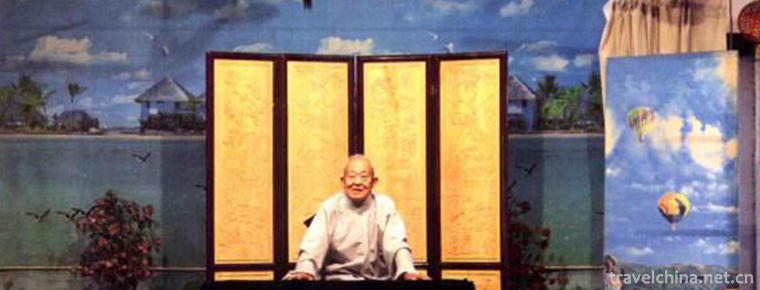
-
Muzhaling Luoyang
Located in Checun Town, Songxian County, Luoyang City, Henan Province, Luoyang Muzhaling is a National Nature Reserve of Funiu Mountain and a world geological park..
Views: 132 Time 2019-02-06 -
Mudan River Side Wall
The Mudanjiang Side Wall was built in the Tang Dynasty, presumably at the junction of Mudanjiang City in Heilongjiang Province and the northeast of Hailin County. .
Views: 286 Time 2019-02-07 -
The Twin Colossals
Shuangta Mountain is located ten kilometers southwest of Chengde Summer Resort in Hebei Province, with a total area of 3000 hectares and beautiful scenery. It is the largest natural scenic resort in C.
Views: 285 Time 2019-02-08 -
Huaxia City Scenic Spot in Weihai
Weihai Huaxia City Scenic Area belongs to Huaxia Cultural Tourism Group Co., Ltd. It is located in Weihai, a beautiful seaside resort city. It is a large-scale ecological and cultural.
Views: 102 Time 2019-02-22 -
Yishui Natural Underground Gallery Scenic Area
Yishui Natural Underground Gallery is located in Liuhuyu Township, Dongtou Township, Yishui County, Shandong Province, which is the first ecological town in Yimeng and the hometown of Hongsiao..
Views: 346 Time 2019-03-04 -
Construction Skills of Official Ancient Architecture
In the process of construction and maintenance of the Palace Museum ancient buildings, a complete set of traditional palace building construction techniques with strict shape has been formed on the ba.
Views: 296 Time 2019-05-01 -
Shu embroidery
Shu embroidery, also known as Sichuan embroidery, is as famous as Su embroidery, Hunan embroidery and Guangdong embroidery. It is one of the four famous embroidery in China. It is a traditional Chines.
Views: 385 Time 2019-06-15 -
Tianjin Timing
Tianjin tune originated from Ming and Qing Xiaoqu. It was formed in the late Qing Dynasty and spread in the early Republic of China. It was sung in Tianjin dialect. The performance form of Tianjin Dia.
Views: 370 Time 2019-06-20 -
Xingshan Folk Song
On May 20, 2006, Xingshan Folk Song was approved by the State Council to be included in the first batch of national intangible cultural heritage list..
Views: 153 Time 2019-07-08 -
The Custom of Hupu Women
Hupu women's custom is a traditional folk custom in Quanzhou City, Fujian Province. Hupu women are mainly distributed in the communities of Hupu, Jinzai, Houpu and Dongmei in Donghai Street, Fengze Di.
Views: 196 Time 2019-07-09 -
Suining medical and health
By the end of 2019, there are 3725 medical and health institutions in Suining, including 76 hospitals (63 private hospitals) and 3622 primary medical and health institutions; there are 21400 beds in medical and health institutions and 18200 health technicians.
Views: 381 Time 2020-12-16 -
Leshan tertiary industry
In 2019, the total retail sales of social consumer goods in Leshan City reached 73.87 billion yuan, an increase of 10.7% over the previous year. According to the statistics of places of operation, the retail sales of consumer goods in cities and towns .
Views: 350 Time 2020-12-17


